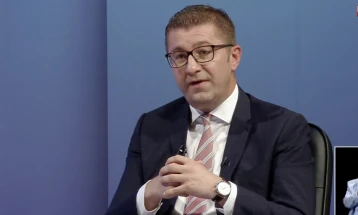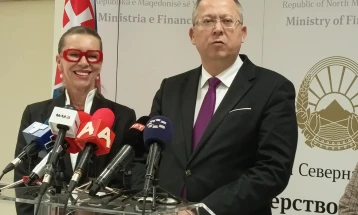Private sector should double contribution in green financing: central bank governor
- More finances should be mobilized, especially from the private sector for green transformation as part of the structural reforms and to converge developing economies toward the EU. IMF analyzes show that by 2030, the private sector’s contribution in green financing should increase from 40 percent to 80-90 percent in fast growing and developing economies. The role of central banks in supporting green transformation is increasingly evident in the past five years, including that of the National Bank, which has been reviewing the matter in a systemic way in the frameworks of its strategic goals.

Skopje, 16 July 2024 (MIA) – More finances should be mobilized, especially from the private sector for green transformation as part of the structural reforms and to converge developing economies toward the EU. IMF analyzes show that by 2030, the private sector’s contribution in green financing should increase from 40 percent to 80-90 percent in fast growing and developing economies. The role of central banks in supporting green transformation is increasingly evident in the past five years, including that of the National Bank, which has been reviewing the matter in a systemic way in the frameworks of its strategic goals.
This was noted by National Bank Governor Anita Angelovska – Bezhoska in a discussion of the Annual Meeting of the IMF/World Bank Dutch-Belgian Constituency, in which the country is a member. The event takes place in Moldova’s Chișinău. Vice Governor Emilija Nacevska is also in attendance.
The Governor addressed a panel on why mobilization of the private capital is important, opened by the chief economist of the World Bank for Europe and Central Asia, Ivailo Izvorski. She referred to the income gap between the country and the counties in the region with the EU economies, which remains deep, and to the effects from mobilization of the private capital for implementing the necessary structural reforms in the economies, namely green transformation.
“The gap for financing green investments is particularly wide especially in developing countries, in our case it is estimated at nearly 7.7 percent of the GDP. Having in mind that public resources are limited, especially after the recent crises, with rising capital prices, we need to combine several policies in order to overcome it,” stated Angelovska-Bezhoska.

The Governor touched upon the role of central banks in green transformation, for which central banks are showing more interest due to the possible effects on price and financial stability.
The National Bank, she said, has adopted a mid-term strategy to determine climate risks, based on a survey to map the ecosystem of the green finances in the country.
Also, the National Bank has issued guidelines for commercial banks on the way climate risks should be included in their strategies and reports and an initial analysis on the exposure of banks to these risks has been made.
To follow the contribution of green loans in the loan portfolios of banks more easily, the National Bank has started collecting statistical data, so called green statistics. An overview of green indicators for better monitoring of the progress of climate goals has been published this year.
“More challenges are ahead, including the establishment of methodology and capacities for doing stress tests regarding climate change, which are key to evaluate risks and forming policies,” said Governor Angelovska-Bezhoska.
On the sidelines of the meeting, Angelovska-Bezhoska had meetings with the governors of the member countries of the Dutch-Belgian Constituency and top officials of international institutions.
Photo: National Bank







